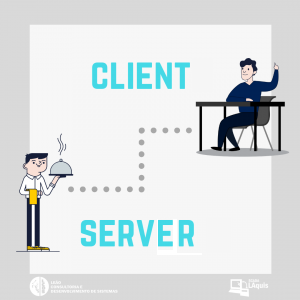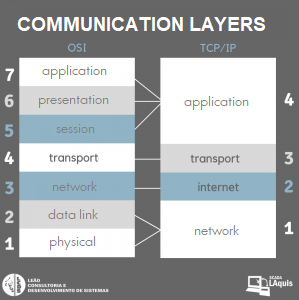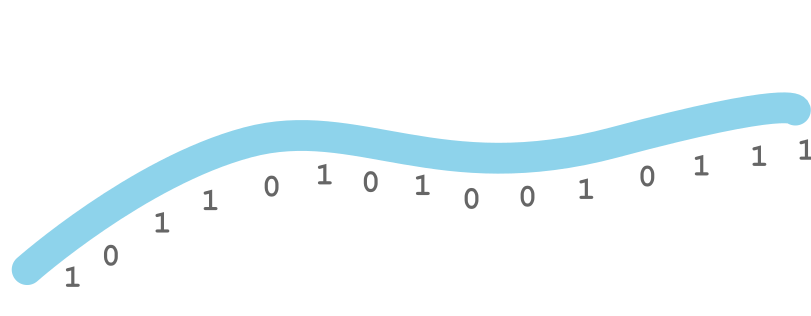When we talk about communication between devices and internet protocols, what comes to mind is the client-server model. This is because it is intended for distributed applications in the DCS (distributed control system) or the ICS (industrial control system). Although the subject is quite vast, our purpose here is not to address endless guidelines and information that can easily be found in books related to computing or networking. With this theme we want to bring in a simple and brief way what exactly is involved in a communication and its internet protocols in practice.
Today there are very interesting subjects about IOT (internet of things) or IIOT (industrial internet of things) and its universe: Industry 4.0, RFID, Arduino, and others, but before that it is essential to understand the basis of communication in its network structure. If you are looking for a SCADA (supervisory / data acquisition software) system that allows deployments with Arduino or explore the IOT world, for example, download and try SCADA LAquis for free here .
Client-Server Architecture
The server is a software, should always be waiting for any request

from
your clients in the network. It usually receives many requests from its customers and so should be a higher performing machine.
The client is also software, whenever it needs to make a communication, it triggers the server. Unlike the server, it is powered by users, which requires a simple graphical user interface. Okay, we talk about the structural model of communication, but what would it be without its communication protocols? Speaking more properly of internet, we will bring TCP / IP.
TCP / IP
There is no way to talk about Transmission Control Protocol (TCP) / Internet Protocol (IP) and not talk about the network layers proposed by the Open System Interconnection (OSI) model created by ISO (International Organization for Standardization), which eventually originated the TCP / IP protocol suite. The OSI model brings 7 levels of communication layers, while TCP / IP brings a slightly leaner architecture. However there are some disagreements among authors about these TCP / IP definitions. Some understand that it brings 5 and others 4 layers. Although it is a controversial subject, the subject of some discussions, we will bring here a more simplified format. Thus the communication layers can be better understood by the following figure.

Remember that the higher level of each of them, the closer to the user it is. In summary, layers have the following functions:
Application (Application, Presentation and Session)
Defines the programs that will communicate, which may vary greatly, according to each application. An interesting detail of this layer is that mostly the client / server communication model is used. Still in this approach, we can mention some protocols necessary for the communication of this layer: DNS, HTTP, HTTPS, SMTP, POP, NFS, FTP.
Transport
Its main function is to bring data to applications. It may also be responsible for information security, controlling flow / congestion and ensuring data packet delivery. The transport protocols used for this layer are:
User Datagram Protocol (UDP)
In this type of protocol there is no switching, ie there is no control / guarantee of packet delivery, has advantage in cases of sending information that requires speed. An example of data transmission in this context is video conferencing.
Transmition Control Protocol (TCP)
This protocol is more secure and ensures delivery, there is packet switching. This means that there is fixed packet addressing. That is, there is a management of where it came from and to whom it should be delivered. Given this, the TCP protocol should be used in applications that require error-free delivery, such as web pages.
Internet (Network)
Responsible for universal addressing. This layer defines the source and destination address of packets. The most common protocol is the Internet Protocol (IP). There are two versions that still use IPv4 (limited number of addresses) and IPv6 (in the future should replace IPv4). Other protocols we can cite from this layer are ICMP, ARP and RARP.
Network / Link Access (Link and Physical)
Physical communication to the network is the responsibility of the driver and card usually incorporated in the device. These manage hardware specifications between the physical interface and the cable. Following are some protocols of this layer: Ethernet, Fast Ethernet, Token Ring, FDDI.
Biography
- Internet of things; OLIVEIRA, Sérgio 2017
- TCP / IP; LAMMLE, Todd 2018
- TCP / IP Quick Reference Guide; PALMA, Luciano & PRATES, Luciano
- TCP / IP Illustrated, Vol. 1: The Protocols; STEVENS, W. Richard 1994
